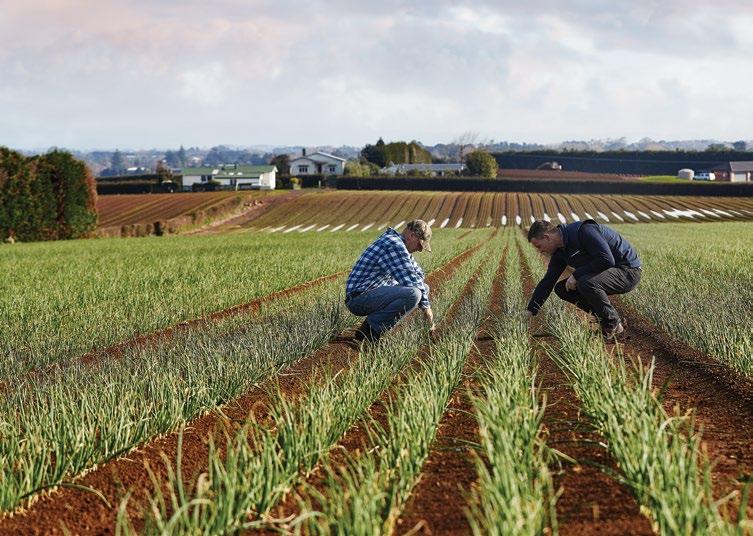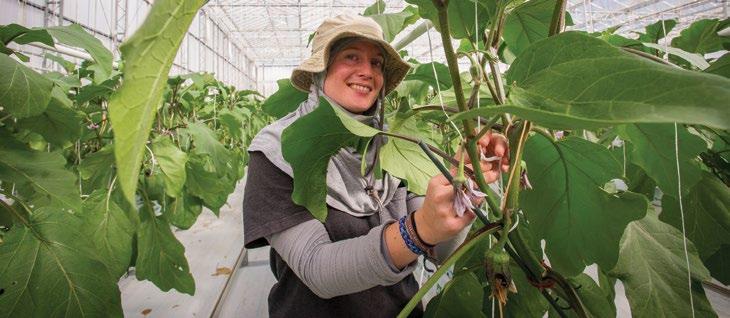
6 minute read
Balancing act for eggplant producer
Geoff Lewis Photography; Trefor Ward
Juliette de Brianson twisting stems and pruning side shoots to encourage eggplants to grow vertically
Working with plants that can grow to nearly 5m tall, New Zealand’s largest producer of eggplant faces a series of balancing acts in growth factors, energy, markets and labour.
CSM Ltd or Forestburg Eggplants is based at Dairy Flat north of Auckland and produces the large majority of the national crop. Eggplant – so called in North America, also known as aubergine in the United Kingdom – is an Old World member of the nightshade (Solanaceae) family to which its New World cousins tomatoes, potatoes, chilli peppers and tobacco belong. Regarded as a fruit, it is believed to have been first domesticated in Southeast Asia.
For Forestburg Eggplants, the story begins when managing director Kees van der Eijk and business partner Svend Pedersen decided to buy an existing glasshouse and hydroponic operation at Dairy Flat in 2001. At the time, that included a 3.5m-high 4,000 sqm glasshouse and packhouse which were about five years old. They began growing capsicum. But five years later after getting a virus infection in one of the glasshouses, they decided to grow something else in that section for the remaining part of that season.
“We had to find another crop. Everyone was growing tomatoes or cucumbers, so we had a look around the supermarkets and realised no one was doing eggplant. So we planted that and it was so successful that the next year we added another greenhouse and then another.“ Forestburg Eggplants now has around 43,000 sqm under glass. Working with Dutch greenhouse designers and following international developments, the structures have progressively got taller as indoor growing technologies developed into 7m-high cathedrals of glass. The company is responsible for about 80 percent of the country’s eggplant production and provides its product to MG Marketing in Auckland which distributes to centres all over New Zealand.
80%

Kees van der Eijk with ‘Jaylo’ variety eggplants
Kees says the aim is to keep production as even as possible throughout the year but 25 tonnes a week is common in winter months, and in summer 40 tonnes and even up to 60 tonnes is possible – but not desirable “as we couldn’t give it away when we go up to that volume.“ The Dairy Flat operation employs about 20 people. In normal times it needs short-term boosts in labour during certain parts of the production cycle. However, the impact of Covid-19 and the loss of a large part of the backpacker workforce has required closer coordination between production levels and what labour is available.
To achieve year-round production Forestburg does multiple plantings. Grafted eggplants are obtained from Gellert Nurseries and grown hydroponically in rockwool substrate. Once fully grown and harvested the water supply to the plants is turned off. They dry out, are cut down, dropped on mats and mulched. Any refuse of fallen leaves is vacuumed off the floor and added to the mulch. The biodegradable material is then trucked to a local farmer. Hydroponic glasshouse operations need heat and CO2 to optimise growth. Many growers use natural gas, but Dairy Flat had no easily accessible natural gas supply. Putting in a pipeline was prohibitively expensive. However, almost next door was a disused regional landfill which produces methane-rich gas from decades of decaying garbage. Operated by Waste Management Ltd, the landfill gas is used to run engines and generate electricity which is returned to the national grid.
As Kees van der Eijk explains: “We buy heat. We pump 80-degree (Celsius) water from heat exchangers at the landfill’s engines. This comes to us through an underground pipeline 900m in length and goes to our boiler, fired by landfill gas, which boosts the temperature to 95 degrees.
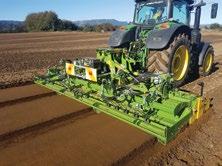
BED FORMERS

ROTARY HOES
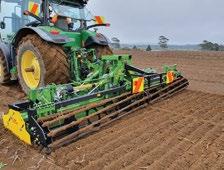
POWER HARROWS

STONE BURIERS

Picking platforms are easily manoeuvred from row to row
Then this is stored in the 600m3 heat storage tank. This whole system is computer controlled and doesn’t need much attention.“
However, landfill gas is not the same as the natural gas supplied through New Zealand’s national system. Landfill gas is ’sour’ and has to be ’scrubbed’ of pollutants including sulphur which are returned to the landfill. Forestburg has its own scrubber on-site. The purified or ’sweet’ gas is then used to fire a boiler for CO2 production and heat. The hot water is pumped through miles of the 2“ pipe-rails to keep the greenhouses between 19 degrees Celsius at night and up to 27 degrees during the day. Eggplants love warmth.
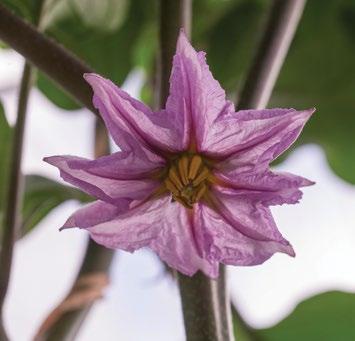
Eggplant flower The CO2 from the boiler is piped into the greenhouses through permeable ducting. Water was also an issue to begin with as the area had no bore water. All water used comes from rain off the extensive roof area and is stored in two outside ponds totalling 27,000m3, Kees explains. However, while Kees has plenty of personal experience in building and running greenhouses and has close connections with top Dutch greenhouse designers and technologies, New Zealand’s growing conditions differ from those in the Netherlands and require specific strategies around light control and ventilation. Good ventilation is essential but as the closed structures have continued to get larger and much taller, these very tall buildings also have disadvantages when it comes to the climate.
“We have had to learn to grow again,“ Kees says. As he explains, this is not only to ensure the plants get the conditions they need to grow but also to control humidity at a level that does not encourage the growth of pathogens including powdery mildew.
Eggplants have their challenges. The stems of the plants are covered in fine hairs which can float in the atmosphere creating health reactions in some workers. Also “every insect loves eggplants.“
Consumer culinary preferences have matured over the years, following European trends. “When we started in 2007, all you could get was massive eggplants weighing 600 grams or more. Now the preference is for fruit in the 300 gram to 450 gram range. Once you cut an eggplant you’ve got to use it so smaller fruits are easier to use,“ he says. As far as capital construction is concerned, Forestburg built a new packhouse three years ago. Covid-19 disruption delayed the installation of a new grading machine and packhouse automation equipment, but they installed it themselves after importing it from Holland in 2021.
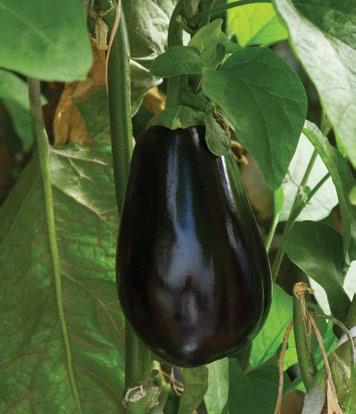
Mature eggplant ready for harvesting
